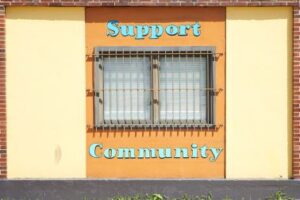A Couple of Heartwarming Fundraising Stories
 Fundraising can become such a mechanical process, in which we focus on rating prospects, writing proposals and scheduling logistics. This is never truer than in the midst of a capital campaign, when the pace of activity must be very high and everyone is focused on the bottom line of the campaign’s financial goal. In these instances, we can lose sight of the fact that we are meeting with real people and challenging them to think about their charitable priorities. Often, those donors take our requests very seriously and make decisions that broaden their philanthropy and demonstrate the impact of successful fundraising.
Fundraising can become such a mechanical process, in which we focus on rating prospects, writing proposals and scheduling logistics. This is never truer than in the midst of a capital campaign, when the pace of activity must be very high and everyone is focused on the bottom line of the campaign’s financial goal. In these instances, we can lose sight of the fact that we are meeting with real people and challenging them to think about their charitable priorities. Often, those donors take our requests very seriously and make decisions that broaden their philanthropy and demonstrate the impact of successful fundraising.
When working on a campaign for a YMCA resident and day camp based in the Berkshire Mountains of Massachusetts, which serves predominantly Connecticut, Massachusetts and metropolitan New York, we recently had two solicitations that produced surprising and very touching results. It was a reminder to me that our work allows us to have an impact on the lives of our donors as well as our organizations.
We met with a couple who are very involved, charitable residents in the local community. While they had not given to the camp in the past, they were friends of the camp’s director. They agreed to meet with us, and were frankly shocked when we asked them for a pledge of $25,000 over five years. The wife commented that was more than they contribute to their church. The husband suggested they might be able to do something in the neighborhood of $15,000 and they would give it some thought.
When we followed up with them, the husband confirmed that they would pledge $15,000 to the campaign. He went on to say that our request had really stretched them, which had forced them to examine what they could truly do, rather than easily saying yes to a modest request. Their deliberations had further prompted them to take a look at all of their charitable priorities. How much did they contribute overall? If they seriously wanted to make this gift, but had trouble budgeting it, what did that say about their philanthropy? What changes were they able to make in their life that would allow them to meet their charitable goals?
All of these deliberations resulted in a lifestyle change for the couple. When the husband informed us of their decision, he explained that they had decided to sell their new BMW and buy a used Volkswagen, freeing up additional funds to make this pledge possible. As we were running a campaign for a children’s camp, I immediately thought of that saying, “A hundred years from now, it will not matter what kind of car you drove, or what sort of house you lived in, or how big your bank account was. But the world may be better because you were important in the life of a child.”
The second story came from an alumnus of the camp, who now lives in a town in coastal Connecticut. Both his parents were now deceased and, without siblings, it fell to him to sell their home and resolve their estate. He decided that he would put some of the proceeds from the house sale toward certain charitable projects. Despite the fact that he had no idea they were conducting a capital campaign, his first thoughts were of the Camp that had provided him such a significant experience in his childhood. He called the Camp’s executive director—actually calling twice before he got the director on the phone—and told the director that he wanted to make a significant charitable gift.
The donor’s objective was to make a gift to the endowment, the income from which would fund scholarships for less fortunate children to attend Camp. He was considering giving $15,000. The Camp’s executive director pointed out that, in order to maintain the principal in perpetuity that would not generate much income each year. With some polite probing, the Camp’s director was able to learn that the donor’s true intent was to fund four scholarships each year. That would require a gift of about $35,000. Once the Camp’s director was able to communicate what would be necessary to achieve the donor’s goal, the alumnus readily agreed to make the gift.
We do so much work changing the lives of those people who receive our services; it is easy to forget that we are often changing the lives of our donors as well. Helping people raise their sights in these ways is a critical step in their philanthropic lifespan. It will have a leveraged impact far beyond the value of their current gift, as they will apply their new philosophy to all future charitable decisions, as well.
Custom Development Solutions: https://cdsfunds.com/